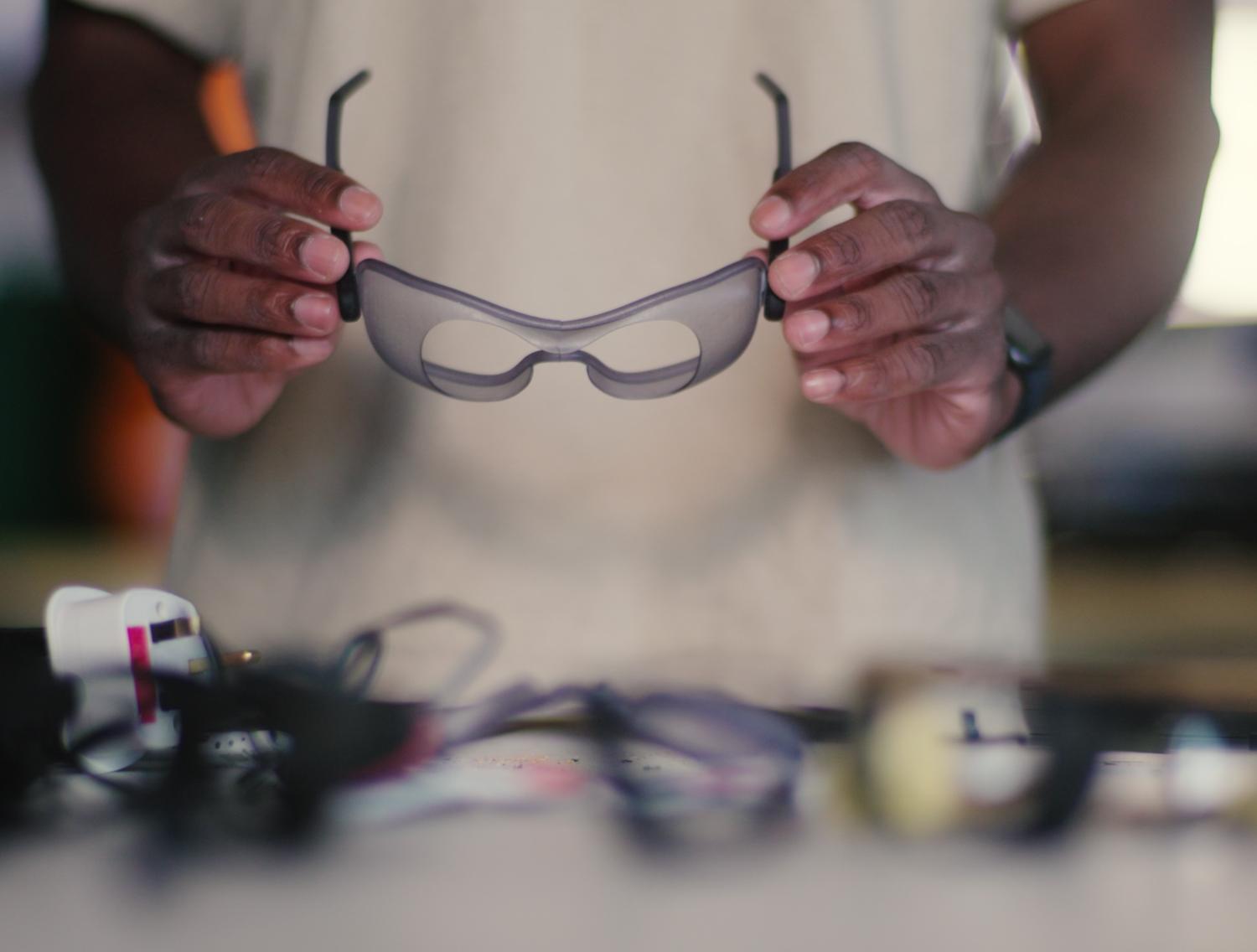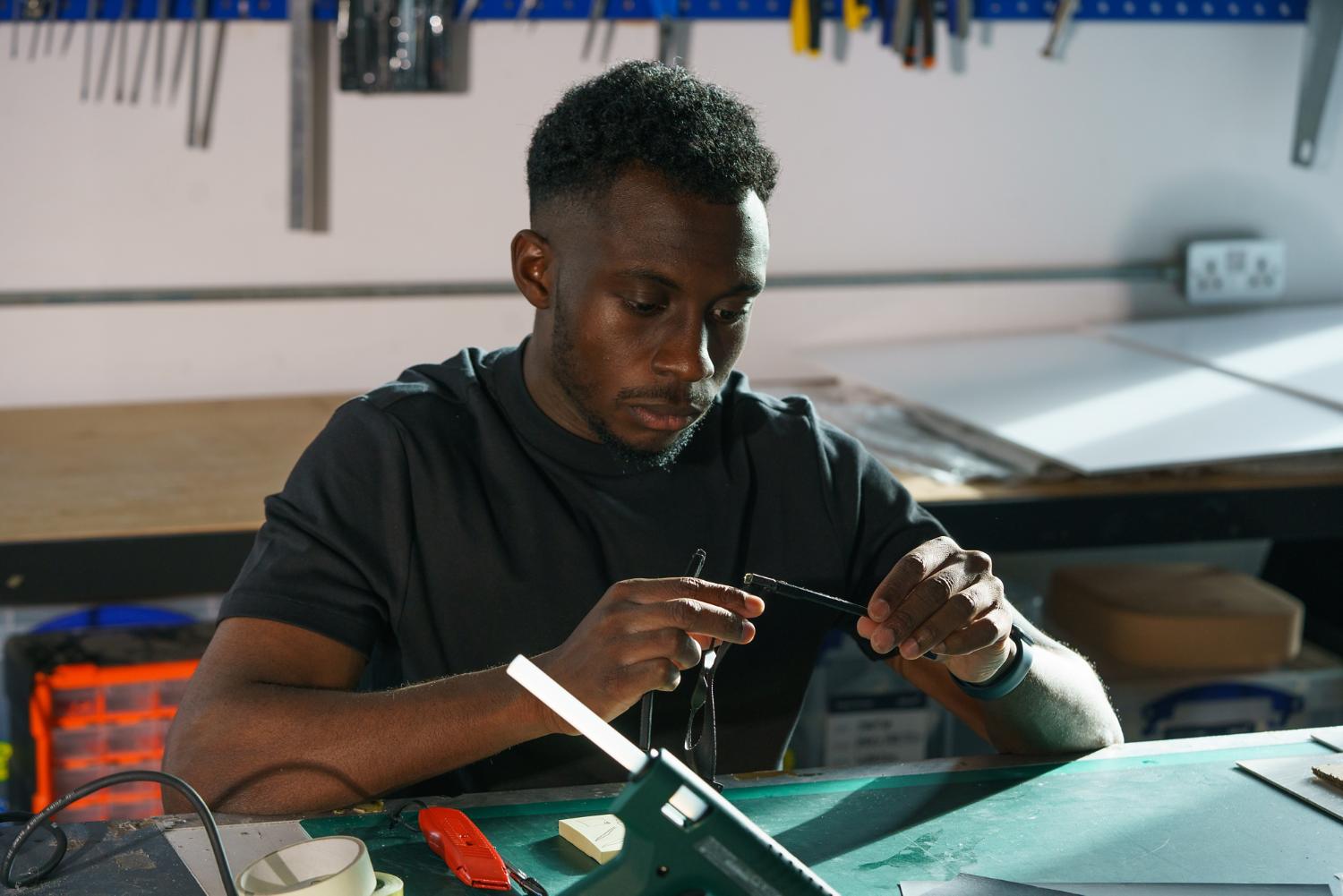Dyson unveils this year’s National James Dyson Award winner, Oasis by Joel Olympio, a Cork-native product design graduate from the University of Limerick. Joel’s personal connection to ADHD (attention deficit hyperactivity disorder), due to his late diagnosis fueled the project's inception. Realising the challenges he faced in certain environments, Joel undertook extensive research and interviews to uncover the common experiences faced by people with ADHD and to ultimately find an innovative solution to this condition that transcends borders and affects millions of lives around the globe.
Worldwide statistics indicate that more than 366 million adults5 have been diagnosed with ADHD, highlighting the global prevalence of this condition. In Ireland, it is estimated that this disorder impacts approximately 5% of the population1, with diagnoses steadily increasing over the years2. Individuals with this disorder often face significant challenges when it comes to focusing in busy environments. The core symptoms of ADHD including difficulties in sustaining attention and regulating impulses 3, can make it particularly challenging to filter out distractions in settings with a high sensory load. Whether it's a busy classroom, a noisy office, or a crowded public space, the constant blast of stimuli can overwhelm individuals with ADHD, hindering their ability to concentrate, learn, and perform tasks efficiently.
Current solutions for managing ADHD in such environments primarily revolve around behavioural therapy, medication, and individualised support 4. While these approaches can be effective, there is a growing need for innovative solutions to revolutionise the way individuals with ADHD navigate open environments by reducing visual distraction and enhancing focus in busy surroundings.

The Invention
The project's name, Oasis, reflects its core mission: to provide a sanctuary of focus within distracting surroundings, much like an oasis in a desert devoid of water.
Oasis harnesses the power of cutting-edge electrochromic film technology to dim the user's mid-to-far peripheral vision while maintaining a clear and focused main field of vision. By selectively dimming the user’s peripheral vision, Oasis effectively reduces distracting visual stimuli in the user's environment. Users can easily adjust the dimming level using the dimmer wheel, which modifies the voltage applied to the electrochromic film. When they need to reengage with their surroundings, a capacitive touch button allows them to turn off the dimming effect.
The device is powered by two batteries discreetly integrated into the temples, which can be re-charged using the product’s case which doubles as a desk clock to aid timekeeping and reminders. Oasis incorporates a haptic engine to provide tactile feedback and haptic chimes to remind users of time passing and refocusing the mind. For individuals with prescription lenses, a "maglens" attachment ensures compatibility with their prescription. The device also comes in two sizes to accommodate a wide variety of head shapes.
Oasis is discrete, adaptable, and accessible, providing a ramp into environments that individuals with ADHD would typically find challenging to focus in. Oasis does not isolate users but rather creates an ideal focusing environment that seamlessly integrates with social interaction.

The Inventor
Joel Olympio's entry to the James Dyson Award was driven by his admiration for Sir James Dyson, whose innovative spirit greatly influenced Joel's career in product design. He was particularly captivated by James’s unwavering commitment to prototyping and continuous innovation. Much like Sir James Dyson, Joel meticulously refined his design, producing a total of 13 prototypes until he achieved utmost confidence in the final concept.
Reflecting on his experience while designing Oasis, Joel Olympio remarks: "I learned about my ADHD when I was around 16 years old, which was relatively late. Upon receiving my diagnosis, many of the challenges I had faced throughout my whole life, such as learning difficulties and being constantly distracted, suddenly started to make sense. Oasis is a narrative of how I developed a product to aid individuals in concentrating within bustling settings and how this journey led to a deeper understanding of myself."
The development of Oasis was an iterative process deeply rooted in user needs and feedback. It began with a comprehensive review of ADHD research and literature, focusing on the environmental context of the condition. Joel also surveyed over 100 ADHD adults worldwide, conducted interviews with 10 individuals at various life and career stages, and synthesised 580 observations into problem and need statements. This extensive research guided the formation of a design guide and paved the way for the creation of Oasis as the chosen solution.
Winning the James Dyson Award
Winning the national leg of James Dyson Award is a significant milestone for Joel and Oasis. From the outset, Joel's vision included the commercialisation of the project, and the award's prize of €5,700 will play a crucial role in bringing a functional model to life.
Looking ahead, Joel plans to source the necessary technology and continue refining Oasis. While it could be manufactured using injection moulding, further testing and development is required to ensure its functionality and effectiveness.
Oasis is now set to progress to the international stage of the James Dyson Award. The international top 20 shortlist will be announced on 18th October, and the international winners on 15th November.
Expressing his excitement, Joel Olympio, the designer behind Oasis, says: "I am thrilled to be named this year's national winner of the James Dyson Award in Ireland. With Oasis, my aim was to design a tool rather than a mere disability aid. I hope that users will perceive this product as a superpower, a portable sanctuary they can carry with them anytime, anywhere."
Barry Sheehan, Head of Design at TU Dublin School of Art and Design and long-time judge on the panel says: "Oasis is one of those deceptively simple designs. At first glance it appears almost too simple. It is when you delve into what it does and why it does it, that you realise that it is solving a complex and little understood problem in a clever way. It does this whilst at the same time being timely, stylish and a hugely desirable product. The entry was beautifully presented, professionally accomplished and a standout of this year's design competition. Oasis is truly a product for anyone, not just ADHD sufferers.”

National Runners-Up
-
Ergotech
Problem: Each year, around 13 million laparoscopic procedures are performed globally but the current laparoscopic tools currently cause excessive flexion of the wrist which can lead to repetitive strain injury in surgeons.
Solution: ErgoTech allows for a more neutral hand position which reduces the pressure on the radial digital nerve of the thumb and the palmar branch of the wrist. The new design allows for easy manipulation of the jaws via a single finger trigger.
-
Zostera
Problem: Seagrass stores 10% of the ocean's carbon annually, yet it faces a decline of 7% yearly. Sadly, traditional mapping methods are highly labor-intensive labour-intensive which leads to data loss.
Solution: Zostera empowers citizen scientists by efficiently mapping vast seagrass meadows. It captures geo-referenced images of the seabed while moving at speeds of up to 1m/s, significantly decreasing the mapping time.
1 ADHD Ireland (2021) https://adhdireland.ie/for-young-people/what-is-adhd/#:~:text=ADHD%20impacts%20approximately%205%25%20of,control%2C%20focusing%2C%20and%20organisation.
2 Irish News (2023) ‘Why are so many adults now being diagnosed with ADHD?’ https://www.irishnews.com/lifestyle/health/2023/01/31/news/why_are_so_many_adults_now_being_diagnosed_with_adhd_-3028986/
3 ADHD Ireland https://adhdireland.ie/general-information/what-is-adhd/
4 ADHD Ireland https://adhdireland.ie/general-information/treatment/
5 Song P, Zha M, Yang Q, et al. The prevalence of adult attention-deficit hyperactivity disorder: A global systematic review and meta-analysis. Journal of Global Health. 2021;11:04009.




